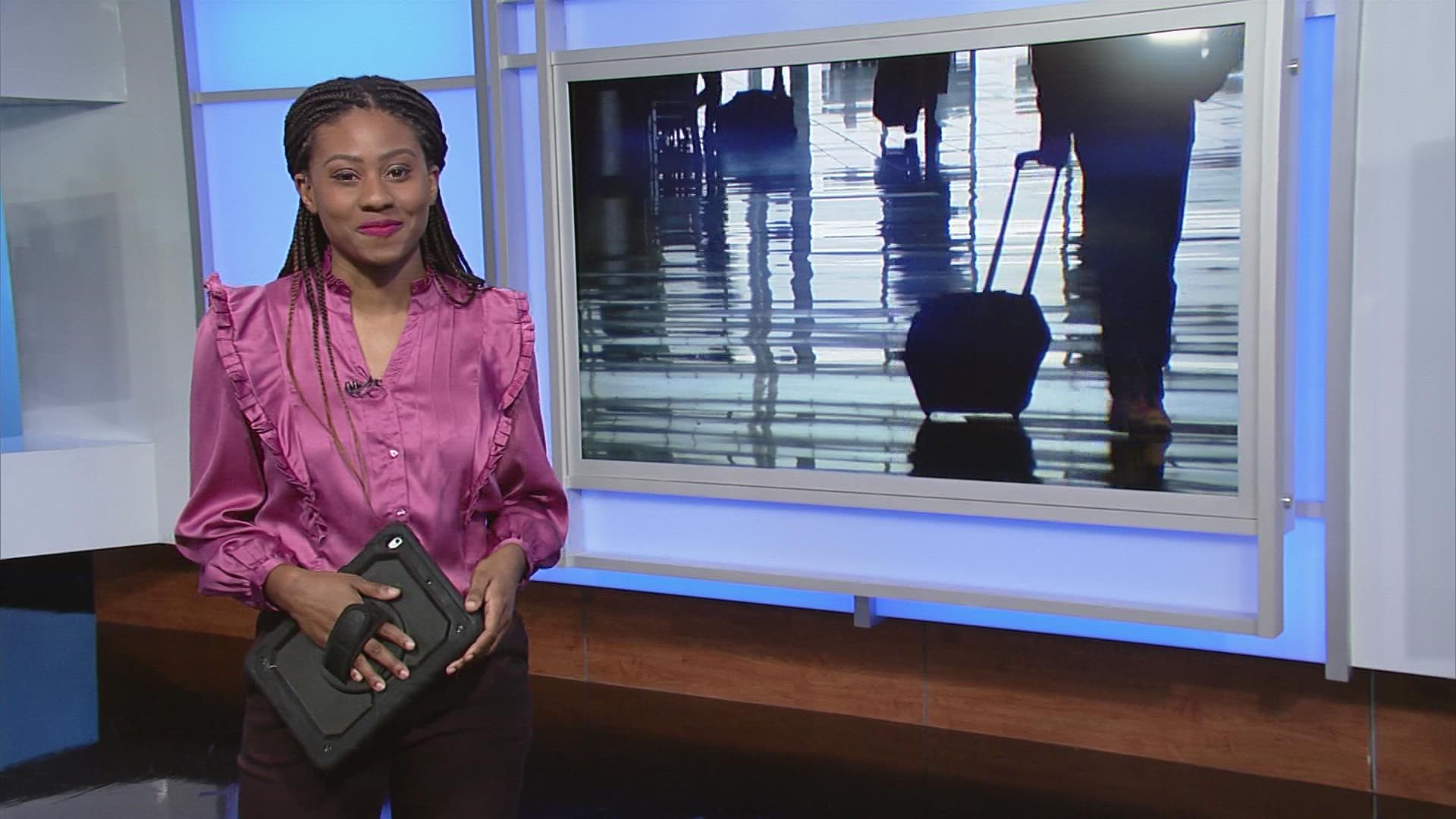INDIANAPOLIS — Spring break travel is upon us once again and airports are expected to be busy with travelers looking to get out of town.
With COVID-19 numbers falling and many public restrictions being dropped, the Transportation Security Administration believes airport travel in March will be as busy as it was before the pandemic.
Because of this, the TSA is reminding passengers of a few tips on how to plan for their trip before they get to the airport. That includes arriving at least two hours ahead of your scheduled departure - especially for early morning flights - and leaving prohibited items out of carry-on bags to keep the security checkpoints moving.
TSA Indiana Federal Security Director Aaron Batt said the TSA is prepared for the increased demand, but is "asking the public to do their part by arriving in plenty of time, packing smart, and treating our officers and fellow passengers with respect and kindness. We’re looking forward to helping everyone get to their destinations safely.”
The TSA said March 11-12 are expected to be the busiest days, with single-day traffic potentially exceeding the busiest travel days in 2019.
The TSA shared ten tips to keep the security lines moving during the spring break travel season:
- Continue to wear a face mask. The mask requirement remains in place and TSA will continue to assess the duration of the requirement in consultation with CDC.
- Follow the rule that limits liquids. Gels and aerosols are limited to 3.4 ounces or less in carry-on baggage. There is an exception for hand sanitizer, which has a temporary 12-ounce limit. The general definition for this rule is that if you can spill it, spread it, spray it, pump it or pour it, then the carry-on quantity is limited.
- Pack food in a clear plastic bag. If you plan to travel with food, it is best practice to pack your food items in a clear plastic bag and place that clear plastic bag into your carry-on bag. When you get to the security checkpoint, remove and place the clear bag containing your food into the bin to reduce the opportunity for cross-contamination between the food and bins.
- Leave prohibited items at home. Be familiar with the TSA prohibited items list for carry-on bags. Travelers can check for prohibited items by using the “What Can I Bring?” page on TSA.gov and by downloading the free MyTSA app, which has a helpful “What Can I Bring?” feature.
- Do not bring a firearm to a security checkpoint. Airline passengers can fly with firearms only in checked baggage. All firearms must be properly packed and declared with your airline at check-in. Contact your airline for additional guidance. Firearms at TSA checkpoints represent an unnecessary risk and an expensive mistake, as you may be subject to a civil penalty.
- Give yourself time. Travel volumes are expected to be higher than they have been in years, and some passengers may be traveling for the first time in quite a while. Staffing challenges may mean extra time is needed for parking, rental car and airline check-in counters, and at checkpoints.
- Empty your pockets when you get to the checkpoint. Place items inside your carry-on bag instead of into a bin to reduce touchpoints and not leave anything behind.
- Listen to TSA officers. They may be providing information on new technologies that help reduce touchpoints and make for a more streamlined and convenient passenger experience.
- Contact TSA with your questions in advance. Tweet your questions and comments to @AskTSA or via Facebook Messenger, weekdays from 8 a.m. to 6 p.m. EST. You can also call the TSA Contact Center at 866-289-9673 from 8 a.m. to 11 p.m. EST or 9 a.m. to 8 p.m. on weekends and holidays.
- Enroll now in TSA PreCheck®. Enrolling in TSA PreCheck allows you to avoid removing shoes, belts, liquids, laptops and light jackets. Most new enrollees receive a Known Traveler Number within five days, and membership lasts for five years.

